
A Closer Look at Witchcraft
Yes we must be wary of witchcraft:
With all things occultish and neopagan being the rage today, it is time to examine more closely various things such as witchcraft and related practices. This can be done in different ways. Yesterday I penned a piece looking at what the Bible has to say about such things. You can see that piece here: https://billmuehlenberg.com/2022/01/08/the-bible-and-witchcraft/
Today I want to look at the contemporary scene a bit, and tomorrow I will provide an inspiring testimony of a former witch who is now a follower of Jesus. Her personal story will help to move all this beyond mere theory, and show us just what is really going on here.
As to what is happening in the West today, plenty can be said. And plenty of books have been penned on these matters. Many of the books I list in my bibliography on the New Age Movement would have chapters on witchcraft, sorcery, and the like: https://billmuehlenberg.com/2017/06/14/recommended-reading-new-age-movement/
Here I want to draw upon just one volume (although many good ones could be featured). Back in 2004 Brooks Alexander wrote Witchcraft Goes Mainstream (Harvest House). He had founded the California-based Spiritual Counterfeits Project back in 1973. This organisation is still going strong (although he stepped down from it in 1998): http://www.scp-inc.org/
He was once heavily involved in the occult before coming to Christ, so he knows full well whereof he speaks. This 280-page work is well documented and well written. Early on he notes four different meanings or categories of witchcraft: biblical; anthropological; historical; and modern religious. This book primarily focuses on the last category. He says this about it:
Almost 250 years after historical witchcraft ceased to exist, modern Witchcraft appeared. It was essentially the creation of one man, in England, in the 1940s [Gerald Gardner]. But as it grew, and especially when it came to the United States in the 1950s and 1960s, modern Witchcraft mushroomed into a populist magical mystery cult that has become one of the most dynamic and rapidly growing movements in America.
Religious Witchcraft was originally conceived as a goddess-centered nature religion (and given the name of “Wicca”), but in the decades since it came to America, the movement has not only increased in numbers and influence, it has also diversified far beyond its original concept.
As to what Witchcraft really consists of, it is quite difficult to pin down:
Witchcraft is individualistic to the point of being anarchic, with no centralized authority or even any agreed-upon definition of what a “Witch” is. In effect, a Witch is whoever says they are a Witch, and Witch beliefs and practices amount to whatever individual Witches actually believe and do. The problem with this approach is that the people who say they are Witches actually believe and do so many different things that no single description fits them all. In fact, the Witches themselves have been stymied in several attempts to come up with a definition.
He notes how the media explosion about witchcraft in the 1990s really gave the movement a massive boost:
In short order, Witchcraft was transformed into a pop-culture phenomenon, and “Wicca” became a teenage fad that didn’t fade, but turned into an enduring trend. Those developments swelled the ranks of Neopaganism far beyond its own “structure” (such as it was), which was based on the various self-proclaimed Witchcraft groups and other organizations making up the active core of the movement. Suddenly, all of that was overshadowed by happenings in the popular media. Suddenly, there were tens of thousands of (mostly young) people running around calling themselves “witches,” and taking their ideas about what that means, not from a tradition, or a teacher of tradition, but from the internet, or a movie, or a TV show. The movement had become a mass movement almost overnight, and it was quickly growing beyond anyone’s ability to control, or direct, or even to measure.
And this has been welcomed by those involved:
The modern Witchcraft movement has always put a high priority on changing the public’s perception of Witches and their craft. During the 1970s and ‘80s, that public relations work went forward cautiously, as a few out-of-the-broom-closet Witches spoke out publically on behalf of their beliefs. Federal Court decisions during the 1980s validated the constitutional status of religious Witchcraft, giving the movement a claim to legitimacy that opened new doors of growth and positive publicity. But the real point of transition, both for the movement and for the image of Witchcraft, came during the 1990s. The mushrooming interest in the subject that followed hard on the heels of the mid-1990s media blitz, fundamentally altered the composition of the movement. It also put a newer, hipper, more youthful face on Witchcraft for the general public to see. Those converging changes created a new center of gravity for the Neopagan movement.


I encourage you to find a copy of this book and read further. But let me finish with a somewhat recent article from Focus on the Family that explores this issue as well. Catherine Sanders discusses “The Hidden Traps of Wicca”. She writes:
Wicca is a complex religion that is often associated with witchcraft, occultism and neo-paganism. The way these words overlap can get confusing, so let’s dive into the dictionary.
Wicca: From the Anglo-Saxon word wicce. It means to bend or shape nature to your service.
Witchcraft: The practice of magic or sorcery by anyone outside the religious mainstream of a society. This term is used in different ways in different times and places.
Occultism: Belief in practices such as astrology, alchemy, divination and magic that are based on “hidden knowledge” about the universe and its mysterious forces. Occultists try to tap into this unseen knowledge to bring about whatever effects they desire.
Neo-Paganism: The recent revival of ancient polytheistic European and Middle-Eastern religions. Neo-paganism is a loosely defined system of worshiping nature and the gods of nature.
These terms may seem as clear as mud. Since different people use them to mean different things, it can be hard to keep them straight. What’s important to notice are the common themes of worshiping nature and using spiritual forces to get results. Most anyone who calls himself or herself a Wiccan, goddess worshiper or witch practices these things. Another important thing to remember is that Wicca is not the same as Satanism. In fact, most witches don’t believe in Satan at all.
In addition, Wiccans live by one central rule called The Rede, which says, “Harm no one, do what you will.” In other words, witches are free to do whatever seems right to them as long as they avoid harming others. A closely related rule is the Threefold Law, which instructs that “anything you do will come back to you three times over.”
She goes on to say this:
One thing Wiccans have right is that there is a supernatural world that interacts constantly with the world we see, touch and smell. Unfortunately, they believe it’s okay for humans to interact with spirits and spiritual forces any way we choose. To the contrary, the apostle Paul writes that the spiritual realm is potentially dangerous. Therefore, we need to treat it the way God tells us to and be prepared for spiritual battles of good versus evil….
Many Wiccans say that Wicca is harmless and nature-loving — that it has nothing to do with evil, Satanism and dark forces. But that is exactly what Satan wants them to believe! Intent on deceit, “Satan himself masquerades as an angel of light,” says Paul. “It is not surprising, then, if his servants masquerade as servants of righteousness.” Paul says that if they don’t turn toward God and repent, “their end will be what their actions deserve” (2 Corinthians 11:14-15).
She concludes:
God has made it clear that Wicca is dangerous and incompatible with Christianity. He made His creation for us to enjoy as a reflection of His character, but not to be worshiped instead of Him. Wicca may seem attractive, magical and different, but it does not give eternal life and a relationship with the God of the universe. If you choose Wicca, you cannot choose God as well, because He will not tolerate worship of anything but Himself. He is perfect and holy. Study God’s Word and you will find that a life centered on the Son of God, Jesus Christ, who gave His life for us on the Cross is better than anything we could ever find here on earth. https://www.focusonthefamily.com/parenting/the-hidden-traps-of-wicca/
In the final piece in this informal series on witchcraft I will discuss one gal’s personal story of her time as a witch, and how she was delivered out of it by becoming a Christian. Make sure to have a read of that.
[1454 words]
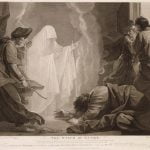





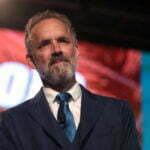

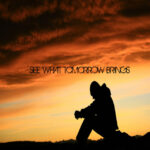




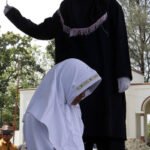





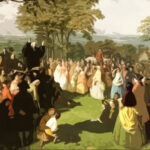
Thanks Bill – much appreciated. Witchcraft became very trendy through the pop culture with Harry Potter and such but young people in particular do not understand the wickedness of what really goes on.
“If you choose Wicca, you cannot choose God as well, because He will not tolerate worship of anything but Himself.” – absolutely!!
I ask any Wiccan, Why worship the created when you can worship the creator?
Blessings
Thanks Grace.
I recently watched a very long video made by Altiyan Childs, an ex freemason, warning about Freemasonry linked to Witchcraft. It’s about 5 and a half hours long and quite revealing.
Have you seen it?
Thanks Jo – no I haven’t.
Hello Bill,
Many years ago, when my son was in year 4, the first Harry Potter came out, and the kids at school all wanted the book to read. It was hard for me to explain to my son that he would not be allowed to read it, because it made witchcraft appealing and was a temptation to young minds to delve further into it. Some of my Christian friends did not agree with me, and allowed their children to read it, because it was just some ‘fun fantasy’. However I read in our local paper that year, the most highly sought after book for Christmas was ‘A teenage girl’s guide to witchcraft’ and that our local Myer store had completely sold out and was waiting on new stock. My son is now an adult, and I am sure that with a mature mind, he has watched the movies by now, but I know that my standing firm on the issue, has given him a Christian perspective to pass on to his own children.
Thanks Lucy. Twenty years ago I wrote this piece:
https://billmuehlenberg.com/2001/12/14/a-review-of-hogwarts-or-hogwash-by-peter-furst-and-craig-heilmann/
Lucy – you did the right thing 🙂
Thanks guys. As mentioned, today’s article is an amazing testimony of one witch set free by Jesus Christ:
https://billmuehlenberg.com/…/from-witchcraft-to-christ/
“Harm no one, do what you will.”
Reminds me of another philosophy satan spawned “do what thou will shall be the whole of the law”.
Satan SEEMS big on freedom doesn’t he???
“because it was just some ‘fun fantasy'”
Ah much I would call compromise begins with those words!
I also think the TV series ‘Charmed’ back in the 1990s may also have had something to do with it. I remember one parent at a church I attended many years ago refused to allow her daughter to watch it.
Yes it has been pushed big time in popular culture Carolyn.
Don’t forget bewitched in the 60’s. So many things I naively watch as a child, as a child of the eighties I saw a lot of Nick at Nite and reruns of old shows on some other networks, I now see were dangerous tools satan was using to subvert people deceptively via entertainment. We have a tendency to disengage our brains while being entertained and thus we absorb things without question or objection.